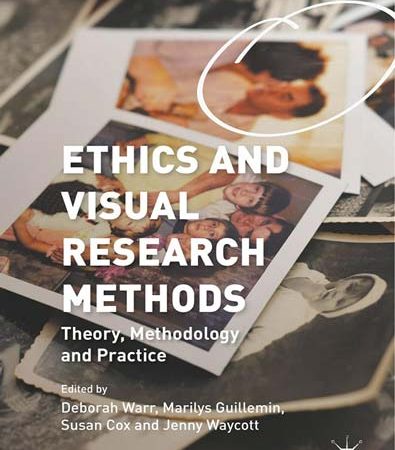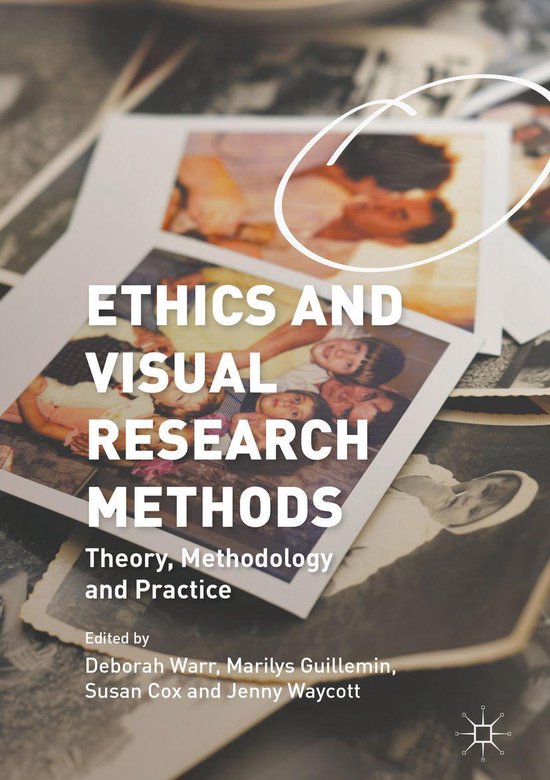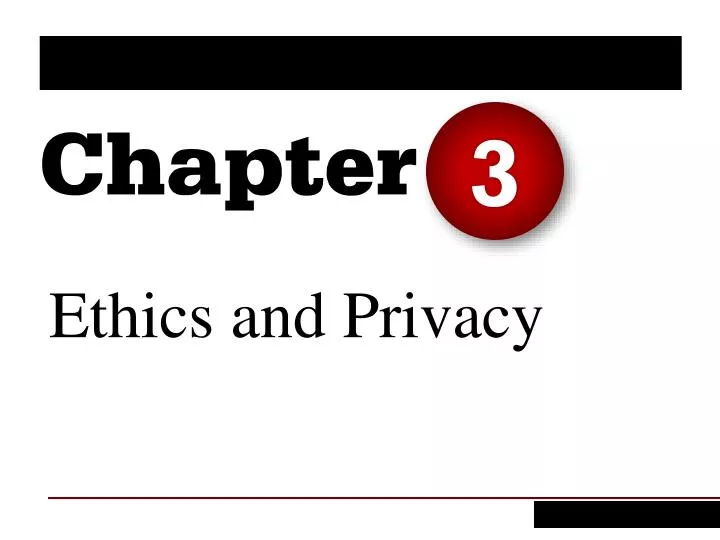AI Conversation
Ethics in Visual Research

In visual research, obtaining informed consent can be creatively approached by using visual consent forms, which incorporate images and symbols to ensure participants fully understand the study, making the process more inclusive and engaging.
https://www.youtube.com/watch?v=GoehqU0sJjw
respect

https://www.youtube.com/watch?v=VDlzUDFS2pM
Respect in visual research ethics involves acknowledging participants' dignity, privacy, and autonomy. Researchers must obtain informed consent, ensure confidentiality, and represent subjects truthfully. It requires sensitivity to cultural contexts and power dynamics, fostering trust and integrity. Respectful practices enhance ethical standards and the validity of research findings.
informed consent

https://www.youtube.com/watch?v=y7BCOolGVcM
Informed consent in visual research ethics ensures participants understand the study's purpose, methods, and potential impacts. It involves clear communication about data use, privacy, and rights, allowing participants to voluntarily agree or decline involvement. This process upholds autonomy, respects individual dignity, and fosters trust between researchers and subjects.
cultural sensitivity

https://www.youtube.com/watch?v=seCkNSgMrQE
Cultural sensitivity in visual research ethics involves respecting diverse cultural perspectives, ensuring accurate representation, and avoiding stereotypes. Researchers must engage with communities, obtain informed consent, and consider cultural contexts to prevent exploitation. This fosters trust, promotes inclusivity, and enhances the validity and impact of research findings.
anonymity

https://www.youtube.com/watch?v=Qvg5DW8Mze4
Anonymity in visual research ethics ensures participant privacy and consent, balancing transparency with confidentiality. It protects identities in visual data, mitigating potential harm or stigmatization. Ethical guidelines advocate for anonymizing identifiable features, fostering trust and integrity while respecting participants' rights and maintaining the research's credibility and validity.
non-exploitation

https://www.youtube.com/watch?v=9zfrpFwIwug
Non-exploitation in visual research ethics emphasizes respecting participants' rights and dignity, ensuring informed consent, and avoiding manipulation or harm. Researchers must prioritize transparency, fair representation, and equitable benefits, fostering trust and integrity while safeguarding against misuse of power and ensuring participants' autonomy and cultural sensitivity.
privacy

https://www.youtube.com/watch?v=mtLPd2u4DiA
Privacy in visual research ethics involves safeguarding participants' identities and personal data. Researchers must obtain informed consent, ensure confidentiality, and use anonymization techniques. Balancing transparency and privacy is crucial to protect individuals' rights while maintaining research integrity and trust. Ethical guidelines help navigate these complex considerations effectively.
confidentiality

https://www.youtube.com/watch?v=DPOxvNbVwKk
Confidentiality in visual research ethics involves safeguarding participants' identities and sensitive information. Researchers must obtain informed consent, anonymize data, and ensure secure storage. Ethical practice requires balancing transparency with privacy, respecting participants' rights, and minimizing harm, thereby fostering trust and integrity in the research process.
transparency
https://www.youtube.com/watch?v=fbFqLvuosbM
Transparency in visual research ethics involves openly sharing methodologies, intentions, and potential biases with participants and audiences. It ensures informed consent, fosters trust, and enhances credibility. By clearly communicating how visual data is collected, interpreted, and presented, researchers uphold ethical standards and promote accountability in their work.
AI Report
Essay
**Ethics in Visual Research**
Visual research, encompassing a range of methodologies from photography to video documentation, plays an increasingly vital role in social sciences, arts, and humanities. However, the ethical implications of visual research are profound and multifaceted. Researchers must navigate complex issues of consent, representation, and the potential impact of their work on subjects and communities. This essay explores the ethical considerations in visual research, emphasizing the necessity of informed consent, the ethical representation of subjects, and the responsibility of researchers to mitigate harm.
Informed consent is a cornerstone of ethical research across disciplines, and it holds particular significance in visual research. Participants must be fully aware of the research's scope, purpose, and potential consequences (Liamputtong, 2007). This means that researchers should provide clear, accessible explanations and obtain consent that is not only informed but also voluntary. In visual research, the act of capturing images or videos can have profound implications for subjects, who may not fully understand how the visual data will be used or disseminated (Wiles et al., 2013). Therefore, researchers must take extra precautions to ensure that consent is understood and freely given, particularly in vulnerable populations.
Representation is another critical ethical consideration in visual research. Researchers must be cognizant of how they portray their subjects, as visuals can perpetuate stereotypes, misrepresent communities, and amplify power imbalances (Hall, 1997). Ethical visual researchers strive to depict their subjects with authenticity and respect, avoiding sensationalism and exploitation. Moreover, they should engage with their subjects in a collaborative manner, allowing individuals to contribute to how they are represented in the research context. This participatory approach not only promotes ethical practices but also enriches the research by incorporating diverse perspectives (Frith & Harcourt, 2007).
Additionally, the potential for harm in visual research is a significant ethical concern. Researchers must consider the repercussions their work may have on individuals and communities, especially when dealing with sensitive topics or marginalized groups (Sullivan, 2012). The visualization of trauma, for instance, can lead to re-traumatization for subjects, necessitating a careful approach to how such visual narratives are constructed and shared. Ethical researchers are therefore tasked with the responsibility of implementing strategies to minimize harm, such as anonymizing data, providing support resources for participants, and being transparent about the research's goals and outcomes.
In conclusion, ethics in visual research is a complex domain that requires careful consideration of informed consent, representation, and the potential for harm. Researchers play a critical role in ensuring that ethical principles are upheld throughout the research process. By prioritizing the rights and well-being of participants, visual researchers can contribute to a more ethical and responsible body of work that respects the dignity of all individuals involved. As the landscape of visual research continues to evolve, ongoing dialogue and reflection on these ethical considerations will be essential for fostering integrity and accountability in the field.
### References
Frith, H., & Harcourt, D. (2007). Ethics in visual research: A discussion of the ethical issues involved in visual research with children and young people. *Journal of Visual Culture, 6*(1), 11-29. https://doi.org/10.1177/1470412907074745
Hall, S. (1997). Representation: Cultural representations and signifying practices. *SAGE Publications*.
Liamputtong, P. (2007). Researching the vulnerable: A guide to sensitive research methods. *SAGE Publications*.
Sullivan, G. (2012). Art practice as research: Inquiry in the visual arts. *SAGE Publications*.
Wiles, R., Crow, G., Heath, S., & Charles, V. (2013). The management of confidentiality and anonymity in social research. *International Journal of Social Research Methodology, 16*(6), 417-428. https://doi.org/10.1080/13645579.2012.1687805
Lesson Plan
### Lesson Plan: Ethics in Visual Research
**Grade Level:** Technical Vocational Students
**Subject:** Visual Research and Ethics
**Duration:** 2 hours
**Instructor:** [Instructor's Name]
---
#### Objectives:
By the end of this lesson, students will be able to:
1. Understand the concept of ethics in visual research.
2. Identify ethical dilemmas specific to visual research.
3. Apply ethical principles to their own research projects.
4. Demonstrate an understanding of how to maintain ethical standards throughout the research process.
#### Materials Needed:
- Whiteboard and markers
- Projector and screen
- Handouts on ethical guidelines (APA, AIGA, etc.)
- Case studies (printed or digital)
- Access to visual research examples (photographs, videos, etc.)
- Note-taking materials
---
### Lesson Outline
**1. Introduction to Ethics in Visual Research (20 minutes)**
- **Discussion:** What is ethics? Why is it important in research?
- **Presentation:** Define ethics in visual research; discuss the implications of visual representation (e.g., privacy, consent, cultural sensitivity).
- **Key Concepts:** Informed consent, copyright, representation, manipulation of images, and cultural appropriation.
**2. Ethical Guidelines and Frameworks (30 minutes)**
- **Presentation:** Overview of major ethical guidelines relevant to visual research (e.g., APA, AIGA, etc.).
- **Handout Distribution:** Provide students with handouts summarizing key ethical principles.
- **Group Activity:** In small groups, students discuss how these guidelines could apply to their specific fields (photography, graphic design, etc.).
**3. Identifying Ethical Dilemmas (30 minutes)**
- **Case Studies:** Present 2-3 case studies that highlight ethical dilemmas in visual research (e.g., unauthorized use of images, misrepresentation).
- **Group Discussion:** Students analyze the case studies in their groups and identify ethical issues present.
- **Class Sharing:** Each group shares their findings and discusses potential resolutions.
**4. Maintaining Ethics in Visual Research (20 minutes)**
- **Discussion:** How can researchers maintain ethical standards throughout their projects?
- **Strategies:** Discuss strategies like regular ethics training, peer reviews, and open communication with stakeholders.
- **Role-Playing:** Students role-play scenarios where they must navigate ethical challenges in visual research.
**5. Conclusion and Reflection (20 minutes)**
- **Wrap-Up Presentation:** Recap key points from the lesson.
- **Reflection Activity:** Have students write a brief reflection on how they will apply ethical principles in their own visual research projects.
- **Q&A:** Open the floor for any remaining questions.
---
### Assessment:
- **Participation in group discussions and activities.**
- **Quality of insights shared during case study analysis.**
- **Reflection paper submitted at the end of the lesson.**
---
### Additional Resources:
- **Books:** "Ethics in Visual Research" by [Author Name], "Visual Ethics: A Reader" by [Author Name].
- **Websites:** American Psychological Association (APA) Ethics Guidelines, AIGA Professional Practices in Graphic Design.
- **Videos:** Short clips on ethical issues in visual media (found on platforms like YouTube).
---
By following this lesson plan, students will gain a foundational understanding of ethics in visual research, enabling them to conduct their future projects responsibly and thoughtfully.
Class Syllabus Outline
### Syllabus: Ethics in Visual Research
#### Course Information
- **Course Title:** Ethics in Visual Research
- **Course Code:** VISR 301
- **Credits:** 3
- **Instructor:** [Instructor Name]
- **Email:** [Instructor Email]
- **Office Hours:** [Days and Times]
- **Class Schedule:** [Days and Times]
- **Location:** [Classroom/Online Platform]
#### Course Description
This course explores the ethical dimensions of visual research across various fields, including art, photography, film, and digital media. Students will engage with theoretical frameworks and practical case studies to understand the moral implications of creating, sharing, and interpreting visual materials. Topics will include representation, consent, cultural sensitivity, privacy, and the impact of technology on ethics in visual research.
#### Course Objectives
By the end of this course, students will:
1. Understand the key ethical principles relevant to visual research.
2. Critically analyze case studies that illustrate ethical dilemmas in visual media.
3. Develop strategies for ethical decision-making in their own visual research projects.
4. Engage in discussions about the societal implications of visual representations.
5. Create a visual research project that adheres to ethical guidelines.
#### Required Texts and Materials
- **Books:**
- “Visual Ethics: The New Norms” by [Author Name]
- “Ethics and Visual Research” by [Author Name]
- **Articles:**
- Selected academic articles and case studies provided via the course website.
- **Online Resources:**
- Access to relevant online databases and ethical guidelines from professional organizations.
#### Course Outline
**Week 1: Introduction to Ethics in Visual Research**
- Overview of visual research
- Importance of ethics in visual representation
**Week 2: Historical Context of Ethics in Visual Media**
- Evolution of ethics in art and visual culture
- Key controversies and landmark cases
**Week 3: Theoretical Frameworks**
- Ethical theories: deontology, utilitarianism, virtue ethics
- Application of theories to visual research
**Week 4: Consent and Representation**
- Informed consent in visual research
- Issues of representation and power dynamics
**Week 5: Cultural Sensitivity and Appropriation**
- Understanding cultural contexts
- Ethical considerations in cross-cultural visual research
**Week 6: Privacy and Surveillance**
- The ethics of privacy in visual research
- Case studies on surveillance and public imagery
**Week 7: Technology and Ethics**
- Impact of digital technology on visual research
- Ethical implications of social media and crowdsourcing
**Week 8: Case Studies: Ethical Dilemmas in Visual Research**
- Group discussions on selected case studies
- Identifying ethical issues and resolutions
**Week 9: Developing an Ethical Framework for Visual Research**
- Creating personal ethical guidelines for visual research
- Workshop on ethical decision-making
**Week 10: Final Project Preparation**
- Guidelines for the final visual research project
- Peer feedback sessions
**Week 11: Presentations of Final Projects**
- Presentation of student projects
- Group critique and discussion
**Week 12: Reflection and Future Directions**
- Reflecting on ethical practices in visual research
- Discussion on the future of ethics in visual media
#### Assignments and Grading
- **Participation:** 15%
- **Weekly Reflection Papers:** 25%
- **Case Study Analysis:** 20%
- **Final Project Proposal:** 10%
- **Final Visual Research Project:** 30%
#### Academic Integrity
Students are expected to uphold the highest standards of academic integrity. Plagiarism and other forms of academic dishonesty will not be tolerated and may result in disciplinary action.
#### Accessibility
If you require accommodations due to a disability, please contact [Disability Services Contact Information] to discuss your needs.
#### Important Dates
- **Add/Drop Deadline:** [Date]
- **Midterm Exam:** [Date]
- **Final Project Due:** [Date]
#### Contact Information
For any questions or concerns, please feel free to reach out via email or visit during office hours. I look forward to a thought-provoking semester exploring the ethics of visual research!
---
*Note: This syllabus is a template and should be customized with specific names, dates, and resources relevant to the course.*
Learning Objectives
### Learning Objectives for Ethics in Visual Research Course
1. **Understand Ethical Principles**: Students will be able to identify and explain fundamental ethical principles related to visual research, including respect for persons, beneficence, and justice.
2. **Recognize Ethical Issues**: Students will learn to recognize common ethical dilemmas that may arise in visual research, including issues related to consent, privacy, and representation.
3. **Apply Informed Consent Practices**: Students will demonstrate the ability to create and implement informed consent processes for participants involved in visual research projects.
4. **Evaluate Visual Representations**: Students will critically analyze visual representations in research, assessing their impact on diverse audiences and the potential for misrepresentation or bias.
5. **Develop Ethical Research Proposals**: Students will learn to formulate research proposals that incorporate ethical considerations, ensuring that their visual research adheres to established ethical guidelines.
6. **Understand Legal Implications**: Students will familiarize themselves with relevant laws and regulations governing visual research, including copyright, intellectual property, and privacy laws.
7. **Reflect on Personal and Cultural Biases**: Students will engage in self-reflection to recognize their own biases and how these can influence their visual research practices and outcomes.
8. **Implement Ethical Review Processes**: Students will understand the role of Institutional Review Boards (IRBs) and learn how to prepare submissions for ethical review for their visual research projects.
9. **Promote Ethical Collaboration**: Students will explore the importance of ethical collaboration with participants and communities, emphasizing mutual respect and shared benefits in visual research.
10. **Critique Case Studies**: Students will analyze and critique case studies of visual research projects, identifying ethical strengths and weaknesses and proposing improvements based on ethical standards.
By the end of the course, students will be equipped with the knowledge and skills to conduct visual research ethically and responsibly within their technical vocational fields.
Quiz Questions
Sure! Here are five multiple-choice questions about Ethics in Visual Research, along with their answers.
### Question 1:
What is the primary ethical concern when conducting visual research involving human subjects?
A) Cost of equipment
B) Availability of software
C) Informed consent
D) Quality of the images
**Answer:** C) Informed consent
---
### Question 2:
In visual research, which of the following practices is considered unethical?
A) Sharing research findings with participants
B) Altering images to misrepresent data
C) Using anonymized visuals for publication
D) Conducting follow-up interviews with participants
**Answer:** B) Altering images to misrepresent data
---
### Question 3:
When analyzing and presenting visual data, researchers should ensure that:
A) All visuals are presented in black and white
B) Interpretations are based solely on personal opinions
C) Participants are adequately represented and respected
D) Copyrighted materials are used without permission
**Answer:** C) Participants are adequately represented and respected
---
### Question 4:
Which of the following is a common ethical guideline to follow when using photographs in research?
A) Use any image without considering its source
B) Always give credit to the photographer and obtain necessary permissions
C) Only use images that are in the public domain, regardless of relevance
D) Modify images to fit the research narrative
**Answer:** B) Always give credit to the photographer and obtain necessary permissions
---
### Question 5:
Ethical considerations in visual research should include:
A) The aesthetics of the visuals
B) The impact of visuals on public perception and participant privacy
C) The cost of producing visuals
D) The technical specifications of the camera used
**Answer:** B) The impact of visuals on public perception and participant privacy
---
Feel free to use or modify these questions as needed!